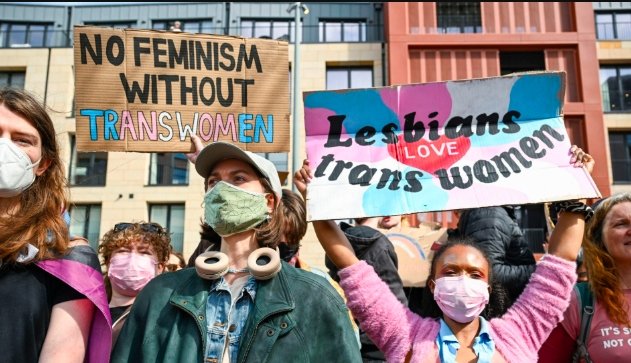The UK Supreme Court’s ruling on the definition of sex has sparked controversy in Scotland. With new guidance issued on the use of single-sex spaces, the Scottish Trades Union Congress (STUC) has voiced concerns, calling the advice “hugely problematic.”
The Supreme Court Ruling and Its Implications
The UK Supreme Court recently ruled that sex is defined strictly by biological characteristics, a decision that has far-reaching consequences. Following this ruling, the Equalities and Human Rights Commission (EHRC) released interim advice on how to apply this judgment, particularly in the context of single-sex spaces.
According to the EHRC’s guidance, trans women (biological men) should not be allowed to access women’s spaces such as hospitals, shops, or restaurants. However, the commission suggests that this group should not be left without any facilities to use, leaving the question of where they should go in limbo.
This ruling, which directly affects the inclusion of trans women in traditionally women-only spaces, has sparked widespread debate across the UK. Advocates argue that it undermines the rights of transgender individuals to live freely and comfortably in public spaces, while opponents say it prioritizes biological sex over gender identity.

STUC’s Critique: A Barrier to Trans Rights
Roz Foyer, the General Secretary of the Scottish Trades Union Congress (STUC), has criticized the Supreme Court’s ruling, calling it “hugely problematic.” Foyer expressed concerns about the implications for the transgender community, particularly regarding the use of single-sex spaces.
While the EHRC’s interim advice offers some guidance, Foyer questioned the practicality and fairness of the ruling. She pointed out that it fails to adequately address where trans people should go if they are excluded from women’s facilities, essentially leaving them without a place to belong. Foyer stressed that the issue goes beyond legal definitions of sex; it’s about the real, lived experiences of trans individuals who are already marginalized in society.
The STUC’s position highlights a growing tension between legal rulings and the need for inclusivity and acceptance. The union has been vocal in advocating for the rights of workers, particularly those in vulnerable communities, and sees this ruling as a step back for transgender rights.
Transgender Rights vs. Legal Definitions
The ruling on single-sex spaces touches on a much broader debate around transgender rights and gender identity. Advocates for transgender inclusion argue that policies should reflect an individual’s gender identity, not their biological sex, as self-identification is an important principle of human rights.
On the other hand, some groups, particularly those concerned with the protection of women’s rights, have expressed that single-sex spaces are necessary to ensure safety and privacy for women. This has led to conflicting views on how society should handle the balance between trans rights and the preservation of single-sex spaces.
The EHRC’s interim advice seeks to strike a middle ground by ensuring that trans women have access to some facilities while also adhering to the Supreme Court’s legal framework. However, many believe that the advice does not go far enough in addressing the needs of transgender individuals, particularly those who face exclusion in both public and private spaces.
The Road Ahead: Finding Common Ground
As the debate continues, the Scottish Government faces increasing pressure to clarify its position on the matter. While the STUC has made its opposition clear, other groups are also calling for a more inclusive approach. The Scottish Parliament has previously been at the forefront of advancing LGBTQ+ rights, and many are hopeful that it will take a more progressive stance in light of the Supreme Court ruling.
At the same time, others argue that Scotland must ensure the protection of single-sex spaces, especially for women and children, who may feel uncomfortable or unsafe if the ruling is overturned. Finding a balance between inclusivity and safety remains a significant challenge, and the issue is unlikely to be resolved in the near future.
As the conversation continues to unfold, the key question remains: How can the rights of transgender individuals be safeguarded without undermining the rights of women and girls in single-sex spaces? The coming months will likely see more discussions, consultations, and potential legal challenges as both sides of the debate continue to advocate for their positions.


















